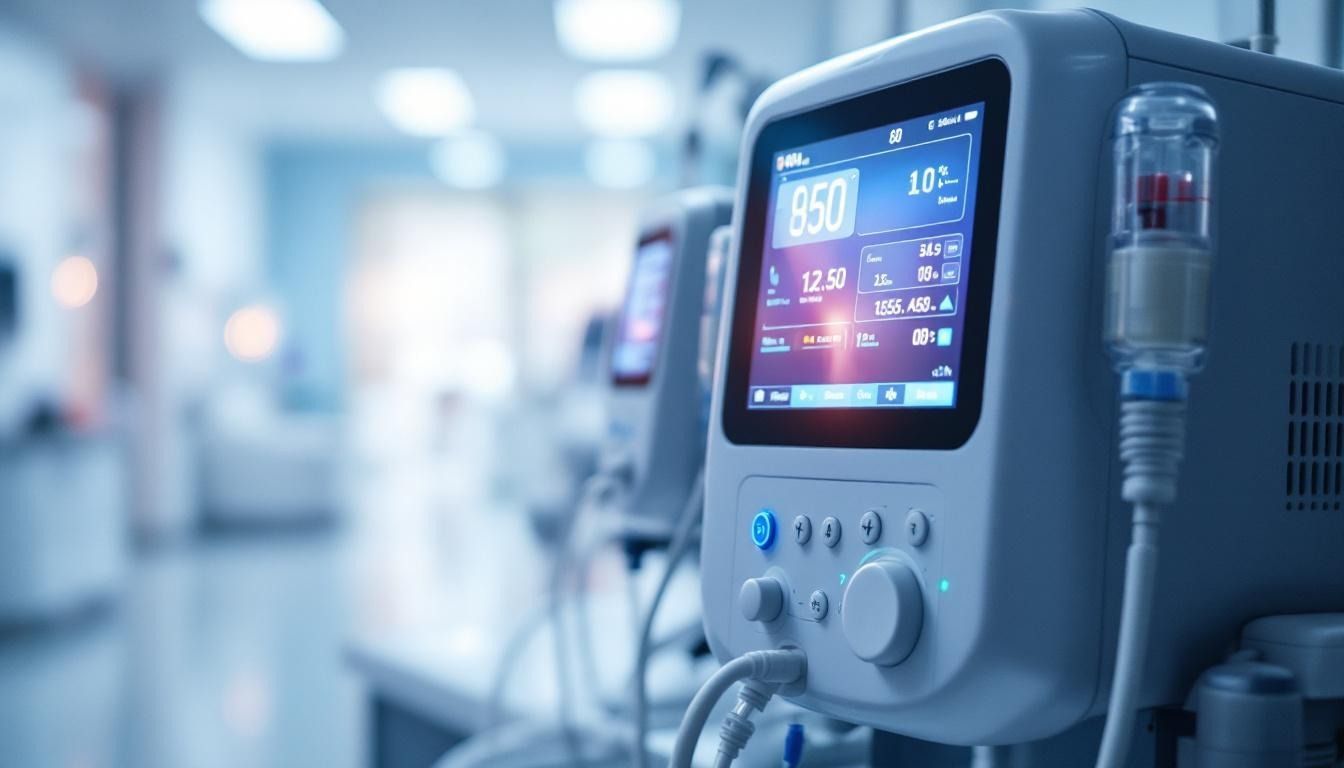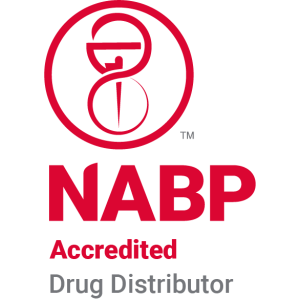Role of amino acids in IPN solutions
Understanding the Crucial Role of Amino Acids in IPN for Dialysis Patients
Amino acids are fundamental components of parenteral nutrition, especially in intraperitoneal solutions designed for patients undergoing peritoneal dialysis. This article explores the biochemical, physiological, and clinical aspects of amino acids in IPN systems, detailing formulation strategies, stability considerations, and their vital contribution to patient care.
Amino Acids in Total Parenteral Nutrition: Composition and Purpose
What are amino acids in total parenteral nutrition (TPN)?
Amino acids in TPN are the building blocks of proteins supplied directly into the bloodstream, bypassing the digestive system. They are essential for maintaining muscle mass, supporting immune function, and facilitating other vital biological processes. These solutions are carefully formulated to include all nine essential amino acids, which cannot be synthesized by the body.
Standard amino acid solutions used in TPN usually contain the nine essential amino acids — histidine, isoleucine, leucine, lysine, methionine, phenylalanine, threonine, tryptophan, and valine — in amounts ranging from 38% to 57% of the total amino acids delivered. This broad inclusion ensures nutritional adequacy for a variety of clinical needs.
What is the formulation of TPN amino acids?
Formulations are designed to meet or exceed daily protein requirements, supporting tissue repair and growth. The amino acids are prepared in sterile solutions, which can be customized for individual patients based on their specific condition, such as renal or hepatic impairment.
Specialized amino acid solutions are available to address particular clinical scenarios — for example, adjusting the amino acid profile to reduce the burden on the liver or kidneys. These tailored solutions improve safety and therapeutic effectiveness.
Why are amino acids important in TPN?
They provide a vital source of nitrogen necessary for synthesizing body proteins. Because they are administered intravenously, they offer a quick and efficient means of restoring protein stores in critically ill patients, malnourished individuals, or those with absorption issues.
Moreover, amino acids in TPN solutions contain less energy compared to the proteins they form because peptide bond formation requires dehydration, meaning the amino acids alone deliver a controlled and safe amount of nutrients without risking excess caloric intake.
Overview of amino acid composition
| Amino Acid Type | Range in Solutions | Clinical Significance |
|---|---|---|
| Essential amino acids | 38-57% of total amino acids | Necessary for protein synthesis and tissue repair |
| Non-essential amino acids | Remaining percentage | Support metabolic pathways and cellular functions |
Understanding the composition of TPN amino acids helps healthcare providers optimize nutrition for individual needs, ensuring safety and efficacy in clinical nutrition support.
Biochemical and Physiological Functions of Amino Acids in Parenteral Nutrition

What is the biochemical and physiological role of amino acids in parenteral nutrition solutions?
Amino acids are fundamental building blocks for the body, crucial for synthesizing proteins and other nitrogen-based compounds. In parenteral nutrition, they support essential biological processes by providing the raw materials needed for tissue growth, repair, and maintenance. These compounds include creatine, peptide hormones, and neurotransmitters, all vital for proper body function.
How do amino acids support growth, repair, and hormone production?
Amino acids are directly involved in cell proliferation and tissue regeneration. They serve as substrates for protein synthesis, which is necessary for muscle development, wound healing, and immune function. Additionally, some amino acids act as precursors to hormones and enzymes, helping regulate metabolic activities and maintaining overall health.
Why are amino acids especially important during critical illness and growth stages?
During critical illness or rapid growth phases, the body’s demand for amino acids increases significantly. Conditions like malnutrition, trauma, or surgery impair protein synthesis and increase protein catabolism. Supplementing amino acids via solutions like IPN helps to compensate for losses, support recovery, and prevent muscle wasting.
This essential role of amino acids in parenteral nutrition underscores their importance in clinical settings, particularly for patients with compromised nutritional intake due to illness or medical treatments.
Formulation Considerations: Stability, Interactions, and Analytical Methods

What are the stability, interactions, and analytical considerations for amino acids in intraperitoneal nutritional systems?
Amino acids used in intraperitoneal nutrition (IPN) must be carefully formulated to ensure their stability and safety when administered to patients undergoing peritoneal dialysis. The stability of these amino acids hinges on multiple factors, including storage conditions, solution pH, and interactions with other components like electrolytes, vitamins, and trace elements.
Certain amino acids such as aspartate, glutamate, tryptophan, and phenylalanine are particularly sensitive to degradation. For instance, amino acids can undergo oxidation or hydrolysis during storage or when exposed to unfavorable conditions, which can compromise their effectiveness and safety. This necessitates strict control over storage temperatures, light exposure, and handling procedures. Maintaining an optimal pH around 8 helps minimize the risk of precipitation with calcium or phosphate and reduces the likelihood of amino acid breakdown.
Interactions between amino acids and other solution components are critical to monitor. Calcium-phosphate salts can precipitate if the formulation's chemistry is not properly balanced, which could lead to blockages or other complications upon administration. Additionally, some amino acids are susceptible to oxidative damage, which can be mitigated by using antioxidants or chelating agents.
Analytical techniques play a vital role in verifying the purity, concentration, and stability of amino acid formulations. Chromatography methods, including high-performance liquid chromatography (HPLC), are predominantly used to separate and quantify amino acids. To improve detection accuracy and reduce interference, derivatization of amino acids is often employed before analysis. Mass spectrometry can provide detailed molecular information and detect trace impurities or degradation products.
Ensuring proper formulation involves maintaining compatible pH levels, preventing precipitation, and avoiding oxidative reactions. Regular analytical testing helps detect any chemical changes over time, ensuring that the amino acids remain effective and safe for clinical use.
In summary, meticulous formulation, storage, and analytical oversight are essential to maintaining amino acid stability in IPN. This approach not only guarantees efficacy but also protects patient safety by preventing degradation and ensuring the quality of parenteral amino acid solutions.
Medical Guidelines and Policy Frameworks for Amino Acid Inclusion in Parenteral Nutrition
What are the medical guidelines and policy considerations for including amino acids in total parenteral and intraperitoneal nutrition?
Medical guidelines recommend adding amino acids to both total parenteral nutrition (TPN) and intraperitoneal nutrition (IPN) to ensure patients receive enough protein, especially when they cannot meet their nutritional needs orally or enterally. The formulation of amino acid solutions should be personalized based on the patient’s health status and metabolic requirements.
For adult patients, typical dosing ranges around 1 gram per kilogram of body weight per day. However, in specific populations such as those with kidney or liver issues, adjustments are often necessary. For example, patients with renal impairment may require modified amino acid solutions to prevent accumulation of nitrogenous wastes.
Policymakers and clinicians emphasize continuous safety monitoring. Regular blood tests for electrolytes, liver and kidney function, and metabolic parameters are essential in avoiding complications such as electrolyte imbalances, refeeding syndrome, or liver problems like cholestasis.
In practice, amino acids are included as an integral part of PN and IPN formulas based on thorough assessment and prescription by healthcare professionals. Specialized amino acid products may be used for conditions like hepatic encephalopathy or critical illness where specific amino acid profiles are more beneficial.
Overall, guidelines aim to support optimal patient outcomes by ensuring adequate protein intake while minimizing potential risks through careful formulation, close monitoring, and adherence to healthcare regulations.
Amino Acids in Clinical Therapy for Dialysis Patients: Nutritional Strategies and Benefits
How do amino acids contribute to nutritional strategies in clinical therapy, particularly for patients undergoing continuous or peritoneal dialysis?
Amino acids are vital in managing the nutritional health of patients on dialysis, especially those undergoing peritoneal dialysis (PD). During dialysis, the body loses significant amounts of protein and amino acids through the peritoneal membrane, which can contribute to malnutrition, muscle wasting, and impaired recovery.
Intraperitoneal amino acid solutions are designed to replace these losses effectively. They provide a direct source of essential nutrients, supporting protein synthesis and preventing energy depletion. When added to dialysate solutions or sterile water, these amino acids help achieve tailored concentrations specific to individual patient needs, as prescribed by healthcare providers.
This approach has shown to induce an anabolic response comparable to eating, which improves nitrogen balance—a crucial factor in maintaining muscle mass and overall health. By counteracting protein-energy wasting, amino acids aid in maintaining serum albumin levels and enhance the patient's nutritional status.
In pediatric and adult populations with malnutrition, amino acid infusions can address growth impairments and muscle degradation. Additionally, these solutions may improve metabolic health by helping to correct acid-base imbalances often seen in dialysis patients.
While promising, the administration of amino acids requires careful monitoring to prevent complications such as metabolic acidosis or amino acid toxicity. Adjustments are made based on ongoing assessments of nutritional status, kidney function, and metabolic responses.
Overall, the targeted use of amino acid solutions during dialysis forms an essential part of holistic nutritional management, contributing to better clinical outcomes and improved quality of life for patients with end-stage renal disease.
The Kidney’s Role in Amino Acid Metabolism and Nutritional Support

What is the role of the kidneys in amino acid metabolism and nutritional support?
The kidneys are vital organs in maintaining the body’s amino acid balance, especially in individuals undergoing nutritional therapy. They participate actively in the synthesis, breakdown, and interorgan exchange of critical amino acids like glutamine, citrulline, and arginine.
One key function involves glutamine, which the kidney uptakes and metabolizes into ammonia. This process helps regulate the acid-base balance and aids in nitrogen excretion, which is essential during metabolic stress or illness.
Citrulline, another amino acid produced from the breakdown of glutamine in the intestines, is converted into arginine in the kidney. This conversion is important because arginine plays a significant role in protein synthesis and nitric oxide production, impacting vascular health.
The kidney also takes up phenylalanine, a neutral amino acid, and converts it into tyrosine. This conversion accounts for about half of the body’s phenylalanine hydroxylation, highlighting the kidney's contribution to amino acid transformation.
Furthermore, renal metabolism involves the uptake and release of amino acids such as glycine and serine. The kidney absorbs glycine, releasing serine in a conversion pathway crucial for amino acid homeostasis.
How the kidney manages amino acids during physiological changes
During states like acidosis, renal handling of amino acids becomes more dynamic. The kidney adjusts its uptake and synthesis processes to help restore balance and support overall nitrogen metabolism.
The kidney is also responsible for synthesizing a portion of arginine, contributing roughly 10-20% of the plasma arginine flux. This synthesis supports ongoing cellular functions and protein turnover.
In addition to synthesis, the kidney helps regulate amino acid availability by converting dietary or supplemental peptides, such as glutamine dipeptides, into individual amino acids before utilization.
Contribution to plasma amino acid levels
Overall, renal metabolism significantly influences plasma amino acid concentrations. Its ability to produce, consume, and transform amino acids makes it an indispensable player in maintaining nutritional health.
Understanding the kidney’s multifaceted involvement in amino acid metabolism emphasizes its importance in managing nutritional therapies, especially for patients with kidney disease or those receiving specialized amino acid formulations.
Optimizing Amino Acid Use for Clinical Outcomes
The strategic use of amino acids in intraperitoneal nutrition solutions is integral to supporting the metabolic and nutritional needs of dialysis patients. Understanding their biochemical roles, stability issues, and clinical applications helps healthcare professionals tailor therapy that enhances recovery, prevents malnutrition, and improves overall prognosis. Continuous research and adherence to clinical guidelines ensure the safe and effective integration of amino acids into patient care protocols, highlighting their essential place in modern nutritional therapy.
References
- IPN
- Parenteral Nutrition: Amino Acids - PMC
- Amino acids (intravenous route)
- Peritoneal Dialysis Patient FAQs
- Renal metabolism of amino acids: its role in interorgan ...
- Dialysate as food as an option for automated peritoneal ...
- Nutritional Status in Peritoneal Dialysis
- Amino Acid-Based Peritoneal Dialysis Solutions for ...
- Protein and energy nutrition among adult patients treated ...
- Parenteral Nutrition Overview - PMC













